Heterokontophyta
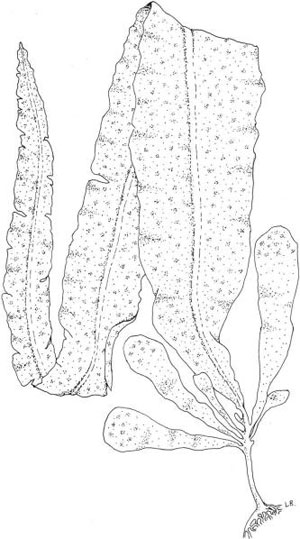
FIGURE 7.5 Frond of Alaria esculenta.
Alaria esculenta, is a large brown kelp, which grows in the upper limit of the sublittoral zone (Figure 7.5). It is known as winged kelp. It has a wide distribution in cold waters and does not survive above 16°C. It is found in areas such as Ireland, Scotland (U.K.), Iceland, Brittany (France), Norway, Nova Scotia (Canada), Sakhalin (Russia), and northern Hokkaido (Japan). In
Ireland it grows up to 4 m in length and favors wave-exposed rocky reefs all around the Irish coast. Eaten in Ireland, Scotland (U.K.), and Iceland either fresh or cooked, it is said to have the best protein among the kelps and is also rich in trace metals and vitamins, especially niacin. It is usually collected from the wild and eaten by local people, and while it has been successfully
cultivated, this has not been extended to a commercial scale.

FIGURE 7.5 Frond of Alaria esculenta.
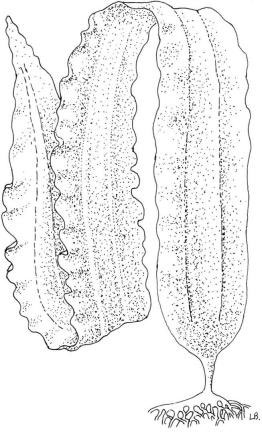
FIGURE 7.6 Frond of Laminaria japonica.
China is the largest producer of edible macroalgae, harvesting about 5 million wet tons annually. The greater part of this is for haidai, produced from hundreds of hectares of the brown macroalga Laminaria japonica (Figure 7.6). It is a large macroalga, usually 2–5 m long, but it can grow up to 10 m in favorable conditions. It requires water temperatures below 20°C. Laminaria was originally native to Japan and the Republic of Korea, where it is cultivated since 1730. It was introduced accidentally to China in 1927 probably by the importation of logs from Hokkaido in Japan. Prior to that, China had imported its needs from the naturally growing resources in Japan and the Republic of Korea. In the 1950s, China developed a method for cultivating Laminaria; sporelings (“seedlings”) are grown in cooled water in greenhouses and later planted out in long ropes suspended in the ocean.
This activity became a widespread source of income for large numbers of coastal families. By 1981, 1,200,000 wet tons of macroalgae were being produced annually. In the late 1980s, production fell as some farmers switched to the more lucrative but risky farming of shrimp. By the mid-1990s, production had started to rise again and the reported annual harvest in 1999 was 4,500,000 wet tons. China is now self-sufficient in Laminaria and has a strong export market. In the Republic of Korea, the demand for Laminaria is much lower and most is now provided from cultivation. Kombu is the Japanese name for the dried macroalgae that is derived from a mixture of Laminaria species. These include L. longissima, L. japonica, L. angustata, L. coriacea and L. ochotensis. These are all harvested from natural sources, mainly on the northern island of Hokkaido, with about 10% coming from the northern shores of Honshu.
The first three of the above are the main components of the harvest. The plants grow on rocks and reefs in the sublittoral zone, from 2 to 15 m deep. They prefer calm water at temperatures between 3 and 20°C. The naturally growing plants are biennial and are ready for harvesting after 20 months. Harvesting is from June to October, from boats. Hooks of various types are attached to long poles and used to twist and break the macroalgae from the rocky bottom. As demand grew in the 1960s, attempts were made to develop artificial cultivation methods, but the 2 yr cycle meant the costs were too high. In the 1970s, forced cultivation was introduced, reducing
the cultivation period to 1 yr, similar to the system developed in China in the early 1950s. Today, about one third of Japan’s requirements come from cultivation, with the remaining two thirds still coming from natural resources.

FIGURE 7.6 Frond of Laminaria japonica.
For cultivation, Laminaria must go through its life cycle, and this involves an alternation of generations. Seedstock is produced from meiospores released from the sori of wild or cultivated sporophytes, cleaned by wiping or brief immersion in bleach, and incubated in a cool, dark place for up to 24 h. Released spore attach to a substratum within 24 h and develop into gametophytes.
Release of gametes, fertilization, and growth into sporophytes about 6 mm long require a couple of months. In the original two-years method, seedstock was produced in late autumn, when the sporophyte produce their sori, and was available for out-planting from December to February, and the crop was ready to harvest in 20 months. In the forced-cultivation method, seedstock is produced in the summer, because sporophytes that spent 3 months in the autumn in the field prior to their second growth season behaved as second-year plants. This method saves 1 yr.
Seedstock is reared on horizontal or vertical strings, placed in sheltered waters for about 10 days; after this period the strings are cut into small pieces that are inserted into the warp of the culture rope. The ropes with the young sporophytes are attached to floating rafts, which belong to two basic types. The first type is the vertical-line raft, consisting of a large diameter rope, 60 m long, kept floating by buoys fixed every 2–3 m. Each end of the rope is anchored to a wooden peg driven into the sea bottom. The ropes with the young sporophytes attached hang down from this rope at 50 cm intervals. The second type is the horizontal-line raft, consisting of three ropes laid out parallel, 5 m apart. The ropes with the young sporophytes are tied across two ropes so that they are more or less horizontal, and each of them has equal access to light.
In China, the largest region for Laminaria cultivation is in the Yellow Sea, which has been found to be low in nitrogen fertilizer. Yields are increased when the floating raft areas, which are usually set out in rectangles, are sprayed with a nitrate solution using a powerful pump mounted in a boat. The plants take up the nitrate quickly and very little is lost in the sea. In Japan, the cultivation is mainly in the waters between Honshu and Hokkaido islands and fertilizing is not necessary. Harvesting takes place in the summer, from mid-June to early July.
The kelp is usually laid out in the Sun to dry and then packed into bales. In Japan, the whole macroalgae is washed thoroughly with seawater, cut into 1 m lengths, folded and dried; the product is suboshi kombu and is delivered to the local fisheries cooperative.
Laminaria species contain about 10% protein, 2% fat, and useful amounts of minerals and vitamins, though generally lower than those found in nori. For example, it has one tenth the amounts of vitamins but three times the amount of iron compared with nori. Brown macroalgae also contain iodine, which is lacking in nori and other red macroalgae. In China, haidai is regarded as a health vegetable because of its mineral and vitamin content, especially in the north, where green vegetables are scarce in winter. It is usually cooked in soups with other ingredients. In Japan, it is used in everyday food, such as a seasoned and cooked kombu that is served with herring or sliced salmon.
Another exploited kelp is Undaria sp., which together with Laminaria sp. is one of the two most economically important edible algae. This alga has been a food item of high value and importance in Japan since 700 A.D. Cultivation began in Japan at the beginning of this century, when the demand exceeded the wild stock harvest, and was followed later in China. The Republic of
Korea began the cultivation around 1970 and today it is the largest producer of wakame/ quandai-cai from Undaria pinnatifida. This cultivation accounts for about 50% of the about 800,000 wet tons of edible macroalgae produced annually in this country. Some of this is exported to Japan, where production is only about 80,000 wet tons yr21. Undaria is less popular than Laminaria in China; by the mid-1990s China was harvesting about 100,000 wet tons yr21 of Undaria from cultivation, compared with 3 million wet tons yr21 of Laminaria at that time.
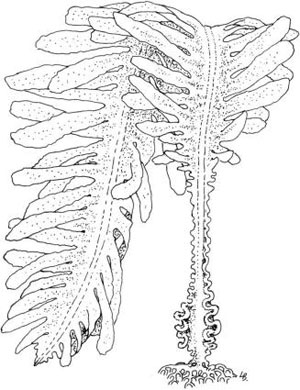
FIGURE 7.7 Frond of Undaria pinnatifida.
U. pinnatifida is the main species cultivated; it grows on rocky shores and bays in the sublittoral zone, down to about 7 m, in the temperate zones of Japan, the Republic of Korea, and China (Figure 7.7). It grows best between 5 and 15°C, and stops growing if the water temperature rises above 25°C. It has been spread, probably via ship ballast water, to France, New Zealand, and
Australia.
Undaria is an annual plant with a life cycle similar to Laminaria. It has an alternation of generations with the large macroalga as the sporophyte and a microscopic gametophyte as the alternate generation.

FIGURE 7.7 Frond of Undaria pinnatifida.
The ropes are immersed in seawater tanks containing fertile sporophytes in April–May, when the water temperature is 17–20°C, and let stand until about 100 spores per centimetre of twine have become attached. The ropes are then lashed to frames submerged in seawater tanks until September–November. When the young plants are 1–2 cm long, and the temperature falls
below 15°C, the ropes are removed from the frames and wound around a rope that is suspended by floats and anchored to the bottom at each end. However, a variation from the Laminaria cultivation is that the rope long-lines are suspended 2–3 m below the surface. In sheltered bays, the ropes are placed 10 m apart; in open waters, where there is more movement, the single ropes are
assembled into a grid pattern using connecting ropes to hold the long-lines about 2 m apart. Harvesting is in two stages. First the plants are thinned out by cutting them off at a point close to the rope. This is done by pulling the rope over the edge of a boat, cutting and dragging the plant into the boat. The remaining plants on the rope have plenty of space and continue to grow.
Harvesting finishes in April.
In Japan, the seeded strings are often cut into small lengths and inserted in the twist of a rope that is then hung vertically from a floating rope, much the same as is done with Laminaria. Harvesting in southern Japan is from March to May, but around Hokkaido it is from May to July.
After its accidental introduction, cultivation of Undaria has been undertaken also in France. Here the above methods were found to be inappropriate because the high nutrient concentrations in the water allowed a large variety of other plant and animal life (epiphytes) to grow on the frames holding the strings. In the seeding method adopted by the French, the gametophytes are formed and maintained in a sterile laboratory medium. One month before out-planting the gametophytes are brought to maturation. After fertilized eggs (zygotes) are formed, the solution with the suspended zygotes is sprayed onto a nylon line that is wound around a frame. The zygotes germinate and young sporophytes begin to grow on the frames, which are free of epiphytes. The sporophytes are out-planted on floating ropes in the usual way.
Undaria is processed into a variety of food products. After harvesting, the plants are washed with seawater, then freshwater, the central midrib is removed, and the pieces are dried in the sun or a hot air dryer; this is suboshi wakame. However, as this product often fades during storage because various enzymes are still active, another process can be used in which the fresh fronds are mixed with ash from wood or straw, so that the alkalinity of the ash inactivates the enzymes. This mixture is spread on the ground for 2–3 days, placed in plastic bags and kept in the dark. The plants are washed with seawater, then freshwater to remove the salt and ash, the midrib is removed and the pieces are dried. This is haiboshi wakame, which keeps its deep green color for a long time, and retains the elasticity of the fresh fronds.
The major wakame product is salted wakame. Fresh fronds are heated into water at 80°C for 1 min and quickly cooled. The mixture is then dehydrated after 24 h incubation with salt (30% w/w) and then stored at -10°C. When ready for packaging, it is taken from storage, the midribs are removed, and the pieces placed in plastic bags for sale. It is a fresh green color and can be preserved for long periods when stored at low temperatures.
Cut wakame is made from salted wakame, which is washed with freshwater to remove salt, cut into small pieces, dried in a flow-through dryer and passed through sieves to sort the different sized pieces. It has a long storage life and is a fresh green color when rehydrated. It is one of the most popular dried wakame products used for various instant foods such as noodles and soups, and its consumption is very popular.
The crude protein content of wakame and kombu is 16.3 and 6.2 g (g/100 g), respectively, and both algae contain all essential amino acids, which account for 47.1% of the total amino acid content in wakame and for 50.7% in kombu. Table 7.2–Table 7.4 summarize the vitamins, minerals, and fiber contents of the two edible algae. This data shows that wakame and kombu have high contents of β-carotene, that is, 1.30 and 2.99 mg (100 g d.w.)
-1 or 217 and 481 µgretinol (100 g d.w.)
-1, respectively. The basic component in sea vegetables is iodine, an essential trace element and an integral part of two hormones released by the thyroid gland. According to the results in Table 7.3, wakame and kombu contain 26 and 170 mg (100 g d.w.)21 of iodine, respectively. The recommended daily dose for adults is 150 µg, meaning that the consumption of 557 mg of wakame and 88 mg of kombu would satisfy the daily requirement for iodine. The toxic dose of iodine for adults is thought to be over 2000 µg day
-1. The intake of recommended amount of wakame and kombu per day would supply 0.94 and 6.29 mg of iodine, respectively, meaning that 1.18 g of kombu a day would not exceed the recommended safe dose of iodine. However, it is claimed that iodine supplements can be toxic only if taken in excess, while eating sea vegetables should cause no concern.
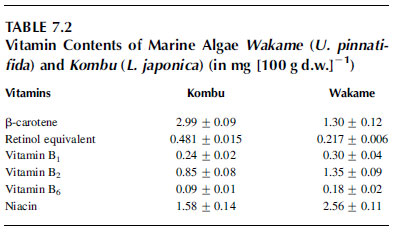
TABLE 7.2 Vitamin Contents of Marine Algae Wakame and Kombu
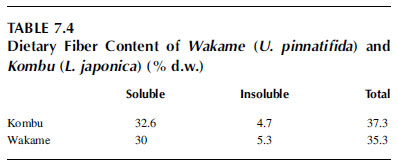
TABLE 7.4 Dietary Fiber Content of Wakame and Kombu
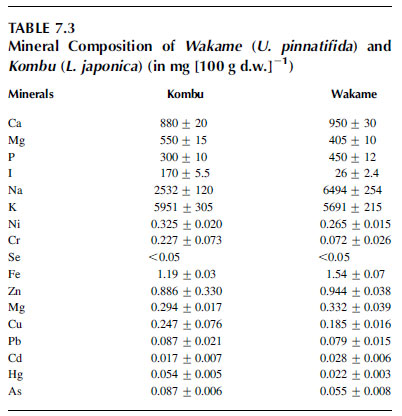
TABLE 7.3 Mineral Composition of Wakame and Kombu
Hizikia fusiforme is another brown algae popular as food in Japan and the Republic of Korea known as Hiziki. Up to 20,000 wet tons were harvested from natural beds in the Republic of Korea in 1984, when cultivation began. Since then, cultivation has steadily increased, on the southwest coast, such that in 1995 about 37,000 wet tons were farmed and only 6000 wet tons were harvested from the wild. A large proportion of the production is exported to Japan, where there is little activity in Hizikia cultivation. This medium-dark brown macroalga grow to about 20–30 cm in length; the many branched along central stipes give an appearance slightly reminiscent of conifer leaves, with a finer frond structure than wakame and kombu. It is collected from the wild in Japan and cultivated in the Republic of Korea, grows at the bottom of the eulittoral and top of the sublittoral zones, and is on the southern shore of Hokkaido, all around Honshu, on the Korean peninsula and most coasts of the China Sea. About 90% of the Republic of Korea production is processed and exported to Japan.
The protein, fat, carbohydrate, and vitamin contents are similar to those found in kombu, although most of the vitamins are destroyed in the processing of the raw macroalgae. The iron, copper, and manganese contents are relatively high, certainly higher than in kombu. Like most brown macroalgae, its fat content is low (1.5%) but 20–25% of the fatty acid is eicosapentaenoic
acid (EPA).
Cultivation process is very similar to that of Undaria and Laminaria. Young fronds collected from natural beds are inserted in a rope at 10 cm intervals. Seeding ropes are attached to the main cultivation rope, which is kept at a depth of 2–3 m using flotation buoys along the rope and anchoring it to the seabed at each end. Cultivation is from November to May, and harvesting
is in May–June.
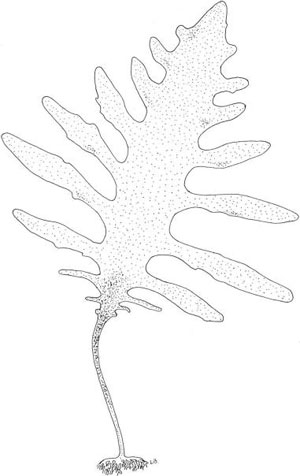
FIGURE 7.8 Frond of Ecklonia cava.
The harvested fronds are washed with seawater, dried in the sun, and boiled with the addition of other brown macroalgae such as Eisenia bicyclis or Ecklonia cava (Figure 7.8), which helps removing phlorotannin. This pigment gives Hizikia its astringent bitter taste. The resulting product is cut into short pieces, sun-dried, and sold packaged as hoshi hiziki. Typically it is cooked in stir fries, with fried bean curd and vegetables such as carrot or it may be simmered with other vegetables.
Japan produces also
Cladosiphon okamuranus cultivated around Okinawa Island. This brown macroalga is also harvested from natural populations around the southern islands of Japan and consumed as Mozuku. It is characterized by a thallus with a stringy not turgid fronds and it can exceed 50 cm in length. Cladosiphon grows in the sublittoral, mainly at depths of 1–3 m. As Undaria and
Laminaria,
its life history involves an alternation of generations, with the fronds being the sporophyte. Spores collected from the sporophytes are stored during the summer and used for seeding nets in fall. When young sporophytes have grown to 2–5 cm, the nets are moved to the main cultivation sites. The fronds are harvested after about 90 days, when they have grown to 50 cm. Harvesting is done by divers using a suction pump that draws the macroalgae up and into a floating basket besides the attending boat. The harvested macroalgae are washed, salted with 20–25% salt, and let to dehydrate for about 15 days. Drained fronds are sold in wet, salted form in packages.

FIGURE 7.8 Frond of Ecklonia cava.











